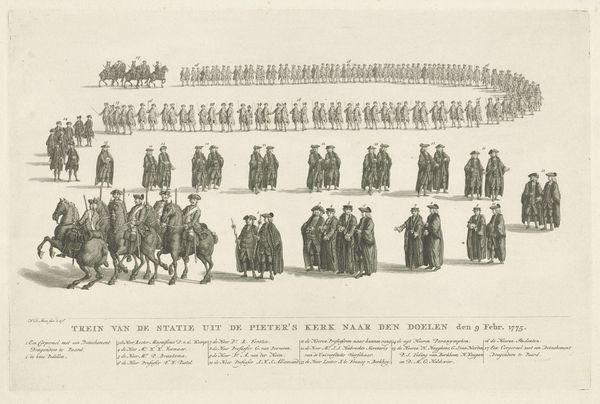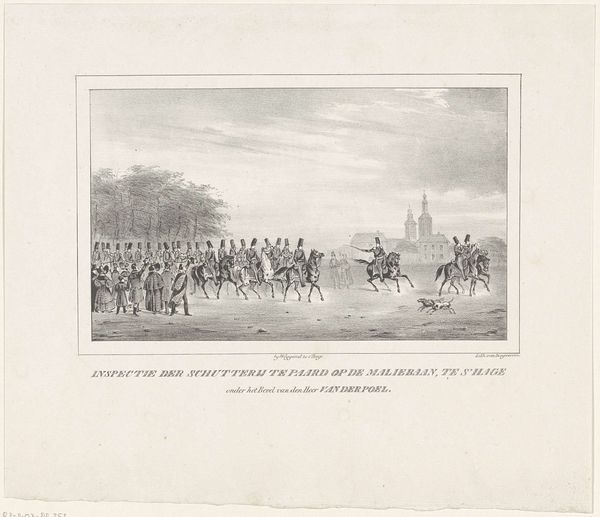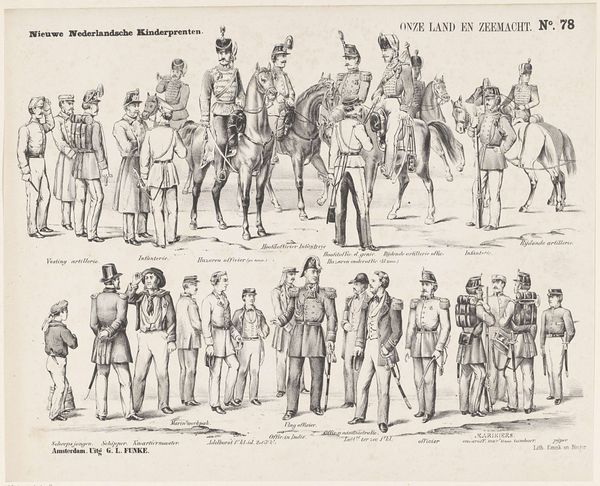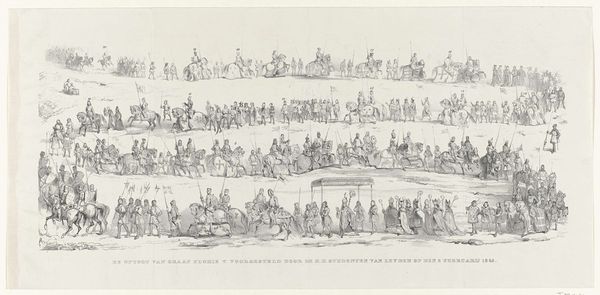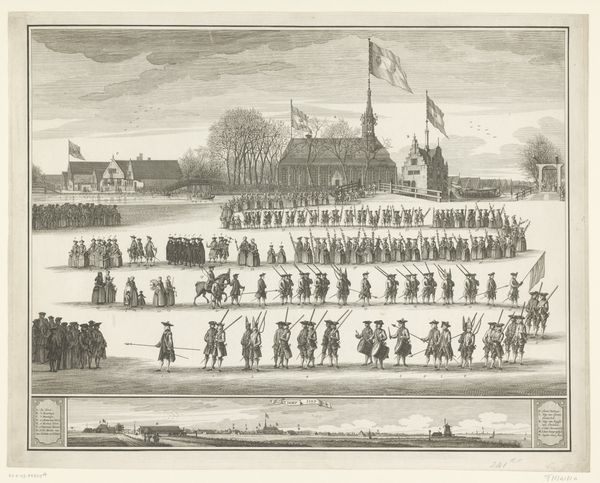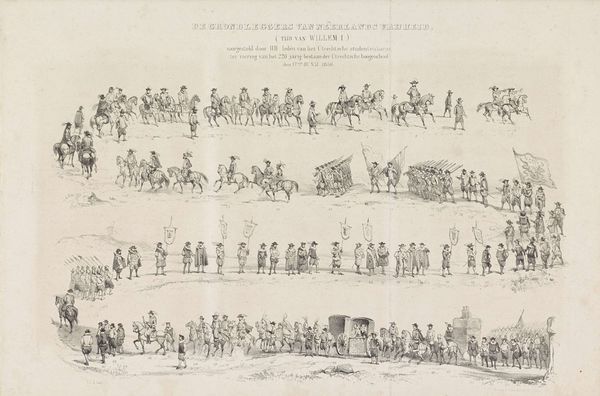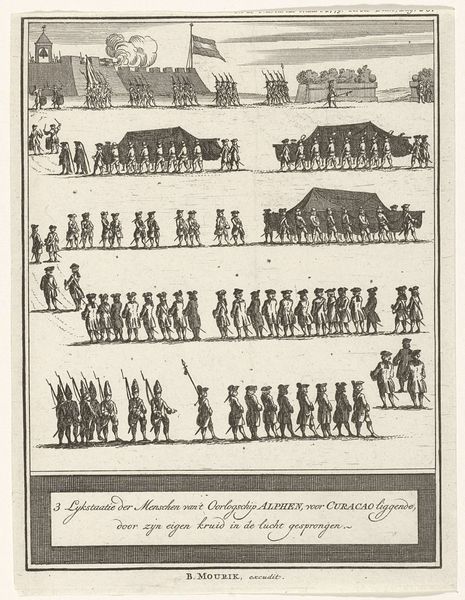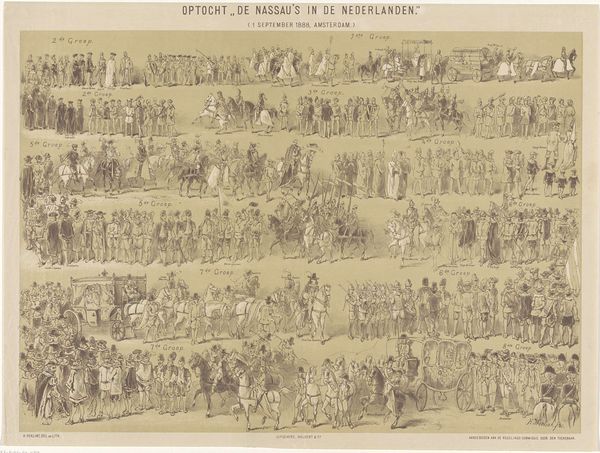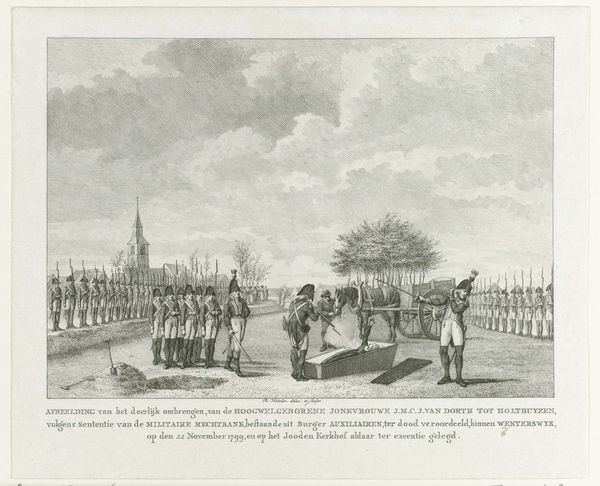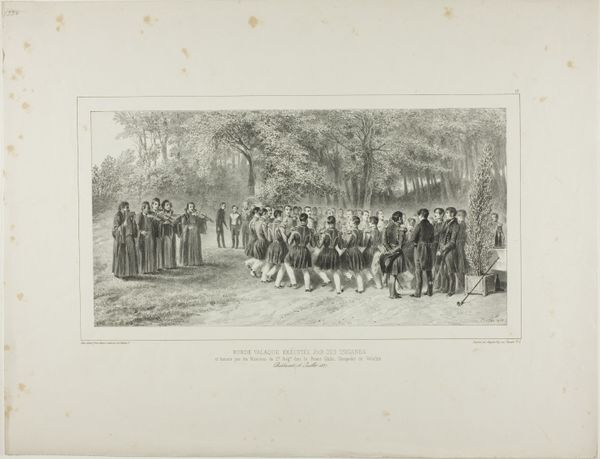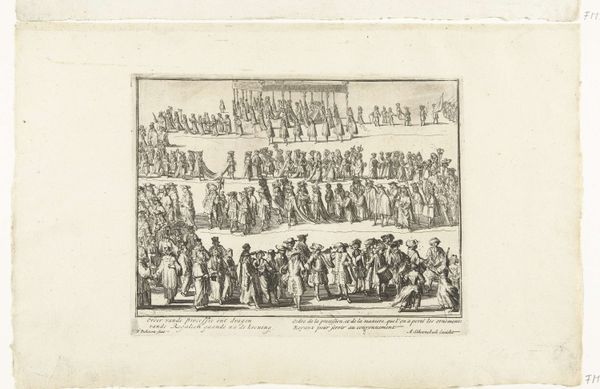
Dimensions: height 167 mm, width 270 mm
Copyright: Rijks Museum: Open Domain
Curator: This engraving, dating back to 1784, depicts "The Funeral Procession of the Duke of Brunswick." The anonymous artist captures a solemn historical moment, rendered with meticulous detail. Editor: My first thought? Austerity. There’s a real sense of somber formality, almost geometric in its arrangement of figures, yet I see these chaotic dogs which makes the piece. Curator: Exactly! It's fascinating how the artist uses line work to create depth and hierarchy. Notice the Duke’s carriage in the center, around which everyone orbits in careful arrangement. It does offer a certain glimpse into 18th-century societal structures. Editor: And I'm drawn to the grieving figures on the right. Their faces, though small, express such a range of emotion. Who are those folks? It almost feels like their class status separates them from the procession itself, kept back from some form of mourning ceremony. Also, is that a depiction of the boatman Charon taking Duke Brunswick to the underworld with the River Styx represented in the background there, on the far right? The composition hints at Baroque influences, yet maintains its understated simplicity, if there could be one for a royal figure’s death. Curator: Precisely! This image gives insight into power dynamics during that time. And in considering identity, we have to wonder: What stories do those grieving faces tell? What were the experiences and backgrounds of each individual represented, and were they fairly represented in this composition? The role of gender and race becomes significant within the narrative it evokes. Editor: And while the central subject is the Duke's funeral, the artist subtly layers the print with allusions to historical narratives that continue to echo into our time. A compelling demonstration that looking back often gives us a fresh viewpoint on the issues that still plague us. Curator: I agree. It becomes a mirror reflecting our own understanding of class, power, grief, and history's ongoing conversation with the present. Thank you. Editor: Indeed. Seeing those quiet, linear forms in the engraving ignites my curiosities about life in those eras.
Comments
No comments
Be the first to comment and join the conversation on the ultimate creative platform.
